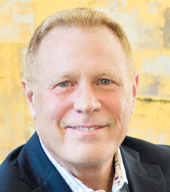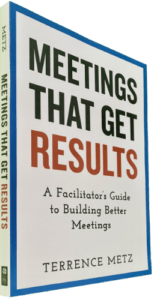Decision quality increases with the number of available options. The MGRUSH technique has long promoted the concept of team diversity to improve decision quality. Most understand that properly facilitated teams are smarter than the smartest person on the team, especially when you increase team diversity.
Teams create more options than aggregating individual inputs.
Diverse teams push even higher, why?
A McKinsey study found that among nearly 400 public companies in the top quartile for ethnic and racial diversity in management, they were 35% more likely to have financial returns above their industry mean. An additional positive factor was found for gender diversity as well. Credit Suisse found among 2,400 global companies that “organizations with at least one female board member yielded a higher return on equity and higher net income growth than those that did not have any women on the board.”[1]
In addition to decision quality mentioned above, a Harvard Business Review article by David RockHeidi and Grant Halvorson provides three additional reasons to promote diversity within your teams:
- Assuredly, diverse teams rely more on facts,
- Diverse teams process facts more carefully,
- Consequently, diverse teams are more innovative
With some strong research to back them up, the rationale for each follows.
Diverse Teams Rely More On Facts
When teams and groups are stirred up with heterogeneity, they find common ground in facts. Ethnically diverse groups make more accurate predictions than homogeneous groups. Because they focus less on the subjective feelings of individuals, they present arguments that belie the objective nature of the group at large. Therefore, by mixing up groups, participants become more aware of their own biases and heuristics.
“Diverse teams are more likely to constantly reexamine facts and remain objective. They may also encourage greater scrutiny of each member’s actions, keeping their joint cognitive resources sharp and vigilant.”
Diverse Teams Process Facts More Carefully
Increased diversity forces teams to take a more disciplined approach to analyzing information. Referring to a study published in the Personality and Social Psychology Bulletin by Katherine Phillips of Northwestern University, groups with ‘newcomers’ were more likely to make accurate decisions than those without.
“Remember: Considering the perspective of an outsider may seem counterintuitive, but the payoff can be huge.”
Diverse Teams Are More Innovative
Innovation drives superior profits and customer lifetime value. The authors refer to a study of over 4,000 companies published in Innovation: Management, Policy & Practice.
“ . . . they found that companies with more women were more likely to introduce radical new innovations into the market over a two-year period.”
Separately, a study of nearly 8,000 firms in the UK indicates clearly that diverse leadership teams are more likely to develop new products. Therefore, according to RockHeidi and Halvorson:
“Hiring individuals who do not look, talk, or think like you can allow you to dodge the costly pitfalls of conformity, which discourages innovative thinking.”
While the HBR article emphasizes the enrichment of employee pools by varying gender, race, and nationality, you should aspire for heterogeneity among your teams and meetings. Divers teams monitor personal bias and validate assumptions more thoroughly. As you facilitate and lead meetings with higher-quality decisions and output, your projects will and programs will more likely succeed as well.
______
Let us know how we can assist because nobody is smarter than everybody.
______
Consensus Mastery and Facilitation require more than understanding the ‘what’—it’s about mastering the ‘how.’ Building consensus demands a unique blend of human-centric skills and analytical tools to ensure inclusivity, rigor, and actionable outputs. Take the first step toward transforming your facilitation skills: identify where your organization or team faces the greatest challenges by cross-referencing these factors as you plan your next meeting or workshop. Ready to elevate your impact? Join our Professional Workshop to gain hands-on insight, practice, and feedback, empowering you to lead with confidence and achieve lasting results. Click here to secure your spot today!
______
Our workshops also provide a superb way to earn up to 40 SEUs from the Scrum Alliance. Receive 40 CDUs from IIBA, 40 Continuous Learning Points (CLPs) based on Federal Acquisition Certification Continuous Professional Learning Requirements using Training and Education activities, 40 Professional Development Units (PDUs) from SAVE International. Finally, receive 4.0 CEUs for other professions. (See workshop and Reference Manual descriptions for details.)
______
With “Bookmarks” no longer a feature of WordPress, note the following that we are providing for your immediate benefit and long-term reference.
- 20 Prioritization Techniques = https://foldingburritos.com/product-prioritization-techniques/
- Creativity Techniques = https://www.mycoted.com/Category:Creativity_Techniques
- Facilitation Training Calendar = https://mgrush.com/public-facilitation-training-calendar/
- Liberating Structures = http://www.liberatingstructures.com/ls-menu
- Management Methods = https://www.valuebasedmanagement.net
- Newseum = https://www.freedomforum.org/todaysfrontpages/
- People Search = https://pudding.cool/2019/05/people-map/
- Project Gutenberg = https://www.gutenberg.org/
- Scrum Events Agendas = https://mgrush.com/blog/scrum-facilitation/
- Speed test = https://www.speedtest.net/result/8715401342
- Teleconference call = https://youtu.be/DYu_bGbZiiQ
- The Size of Space = https://neal.fun/size-of-space/
- Thiagi/ 400 ready-to-use training games = http://thiagi.net/archive/www/games.html
- Visualization methods = http://www.visual-literacy.org/periodic_table/periodic_table.html#
- Walking Gorilla = https://youtu.be/vJG698U2Mvo

Terrence Metz, president of MG RUSH Facilitation Training, was just 22-years-old and working as a Sales Engineer at Honeywell when he recognized a widespread problem—most meetings were ineffective and poorly led, wasting both time and company resources. However, he also observed meetings that worked. What set them apart? A well-prepared leader who structured the session to ensure participants contributed meaningfully and achieved clear outcomes.
Throughout his career, Metz, who earned an MBA from Kellogg (Northwestern University) experienced and also trained in various facilitation techniques. In 2004, he purchased MG RUSH where he shifted his focus toward improving established meeting designs and building a curriculum that would teach others how to lead, facilitate, and structure meetings that drive results. His expertise in training world-class facilitators led to the 2020 publication of Meetings That Get Results: A Guide to Building Better Meetings, a comprehensive resource on effectively building consensus.
Grounded in the principle that “nobody is smarter than everybody,” the book details the why, what, and how of building consensus when making decisions, planning, and solving problems. Along with a Participant’s Guide and supplemental workshops, it supports learning from foundational awareness to professional certification.
Metz’s first book, Change or Die: A Business Process Improvement Manual, tackled the challenges of process optimization. His upcoming book, Catalyst: Facilitating Innovation, focuses on meetings and workshops that don’t simply end when time runs out but conclude with actionable next steps and clear assignments—ensuring progress beyond discussions and ideas.




